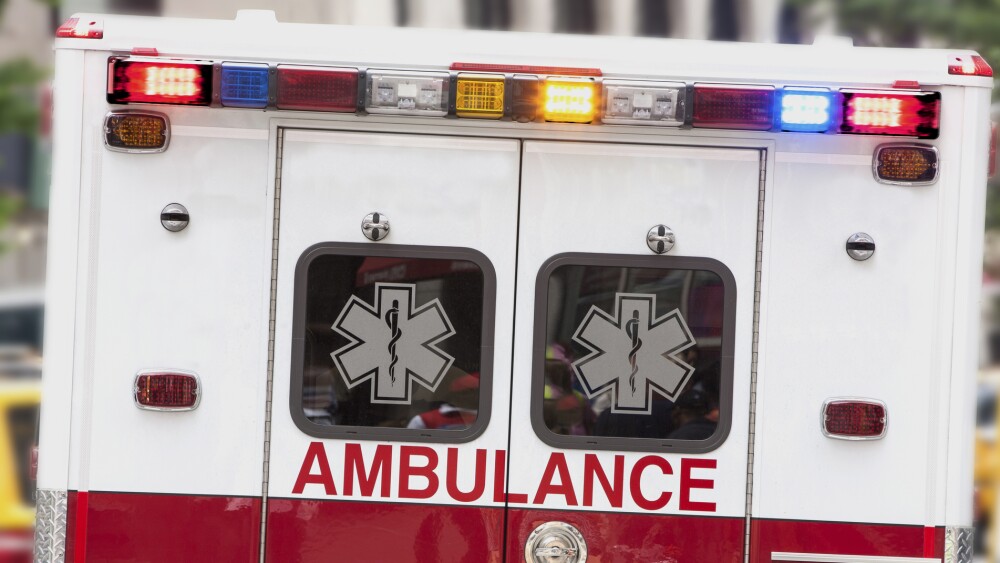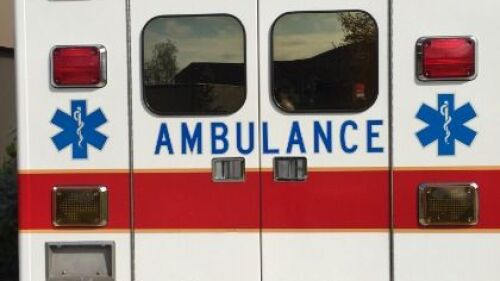The Buffalo News, N.Y.
BUFFALO, N.Y. — The Buffalo Common Council is considering creating the city’s own ambulance service because lawmakers are worried about the response times of American Medical Response ambulances to emergencies.
AMR’s response times have raised “significant concerns” among Council members about the reliability and effectiveness of the services, according to a resolution introduced Tuesday by Council President Christopher P. Scanlon.
“For a number of reasons, I want the administration to look into creating our own fire service,” Scanlon said. “I know other cities do it. There’s no reason we can’t do it. Whether it’s embedded within the fire department, I think we would have greater control over things, holding people more accountable, could almost create a feeder to the fire department where you have people already EMT certified who could be members of the fire department.”
The Council approved the resolution Tuesday asking the Buffalo Fire Department and the administration’s Department of Finance and Administration to conduct an evaluation and produce a report on the feasibility, fiscal impact and potential long-term cost savings for establishing an ambulance service within the fire department.
The report should include an analysis of the current ambulance service costs, potential savings from reduced contract expenditures, staffing requirements and necessary equipment and training.
Insider Analysis: A move toward city-run EMS?
Watch as Ed Bauter, MBA, MHL, NRP, FP-C, CCP-C; and Daniel Schwester, MICP, highlight the significance of this development ion Buffalo, New York.
Scanlon, who represents the South District, also wants a comparison of EMS models from similar-sized cities that have successfully implemented their own ambulance services, including best practices and lessons learned.
The Council wants the report, findings and recommendations presented to the Council within 180 days.
The Council plans to discuss the ambulance situation again during a Sept. 10 meeting.
Fillmore Council Member Mitchell P. Nowakowski has asked AMR to provide details to Council’s Finance Committee on Sept. 10 about the company’s average response times in the last year, including a mapping of response times to help lawmakers better understand the distribution of the delays.
Nowakowski said he also would like data on any current staffing or vehicles shortages that could be contributing to the delays and any plans AMR has to address them.
AMR spokesperson Ashton Polk said in an email Tuesday the company intends to present its performance data for Western New York to the Council on Sept. 10 .
Buffalo lawmakers will have more time to review mayor’s budget proposals
The Common Council on Tuesday approved a series of amendments aimed at giving lawmakers more time to review and vote on the mayor’s annual proposed city budgets.
Scanlon’s resolution follows concerns raised over AMR’s response times, as well as the city’s contract with AMR, which expired March 21, 2021, Nowakowski said.
He said “numerous” constituents and businesses have contacted him about AMR response times, including individuals experiencing serious medical emergencies who were left without proper care for more than an hour, or received no service at all.
“It began when my office got a call from a school principal where a student was facing an emergency, and they were calling 911 and ultimately were not getting a response. They ended up calling my office in the middle of that response,” Nowakowski said.
“There was an incident in my district in the Larkinville neighborhood where an establishment had a patron that suffered a medical emergency. They called the proper authorities. It was not responded to,” he added.
North Council Member Joseph Golombek Jr. also weighed in with his concerns.
“I know that we had some problems it the past. We had twice children– 10, 11, 12 years old – had broken legs, broken bones during a football game, and they had to wait for over an hour for the rescue squad to get there, and I had hoped that we were beyond this, as well,” Golombek said. “But I had gotten a couple of phone calls during last year’s football season that there were a couple of issues that the president was concerned about. ... When you’re calling 911, when you’re calling for a rescue squad unless there’s some sort of mass emergency there’s no excuse for them not to get there within a quick amount of time.
Council Member Joel Feroleto of the Delaware District said Tuesday that he was told by a constituent that she had to wait five hours for an AMR ambulance to show up when her mother was having a heart attack.
AMR has been providing ambulance services in Buffalo since 2016, when AMR purchased Rural Metro Ambulance Co., which had won a five-year contract from Buffalo in 2015.
In 2021, when Buffalo sought requests for proposals for providing ambulance service to the city, it wanted bidders to be able to have an ambulance on the scene of the highest priority medical emergency calls within nine minutes 90% of the time.
AMR, based in Greenwood Village, Colo., provides ambulance service to communities across the country, including in the upstate New York cities of Buffalo, Rochester, Syracuse and Corning.
In Western New York, AMR has a team of more than 500 paramedics, EMTs and support staff who transport patients throughout Erie and Niagara counties from 911 emergency calls and non-emergency trips between medical facilities, according to the company’s website.
Across the country it operates a fleet of more than 8,000 ground ambulances and support vehicles equipped for 911 emergency services or interfacility transports.
Launching an ambulance service would be a new added expense for Buffalo, a city that is facing a looming financial crisis as soon as 2025. With federal pandemic relief dollars and its own surplus funds disappearing, the city’s budget gap is expected to be $41 million to $58 million next year unless Mayor Byron Brown persuades the federal, state or county government to provide the city with more funding.
In September 2023, Erie County purchased five ambulances and launched its own ambulance service to fill gaps in service in rural towns where volunteer ambulance services are struggling with a lack of emergency medical technicians and paramedics. The county ambulances act as a backup in the towns of Aurora, Wales, Eden, Boston, Colden, Holland, Collins and North Collins, providing safety net service to patients when other ambulance companies cannot.
That limited service was expected to cost the county $4.67 million in its first year and $2 million a year after that, county officials said in 2023.
___
(c)2024 The Buffalo News (Buffalo, N.Y.)
Visit The Buffalo News (Buffalo, N.Y.) at www.buffalonews.com
Distributed by Tribune Content Agency, LLC.







